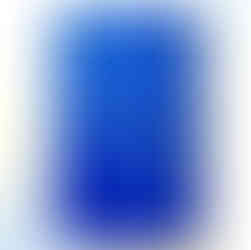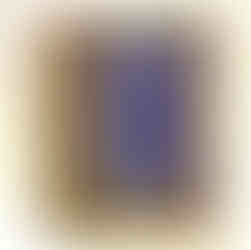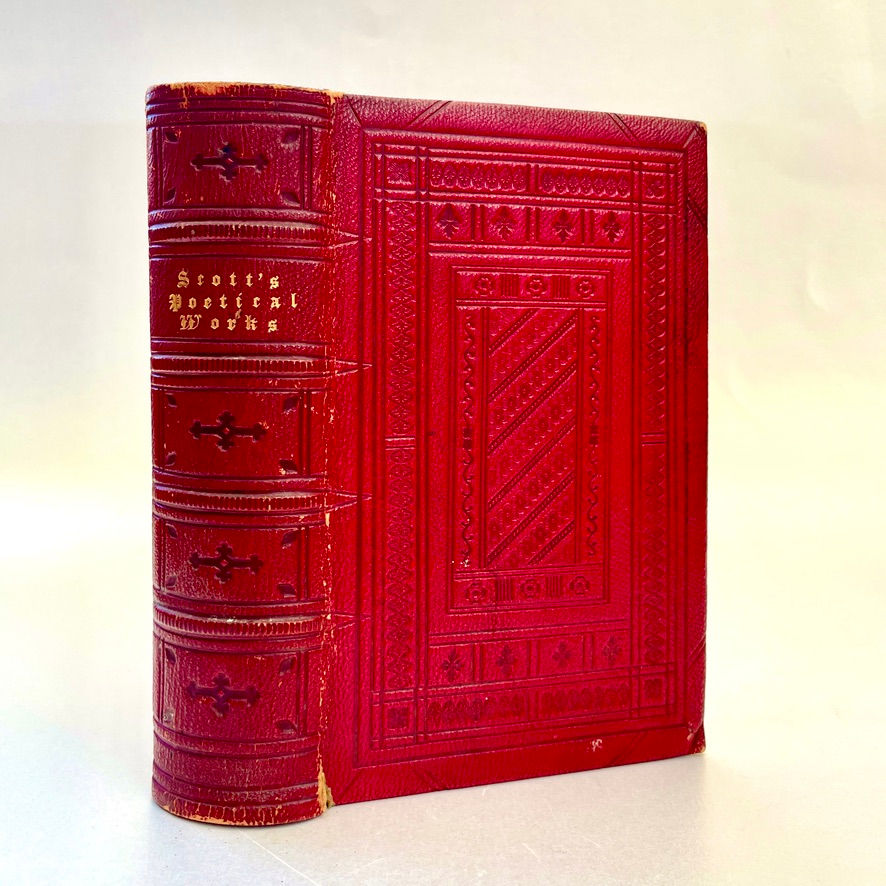Blind Stamping in Bookbinding: The Subtle Art of Victorian Design and Decoration
- Marie
- Oct 14
- 3 min read
When we admire antiquarian books, our eyes are often drawn to shimmering gilt titles and ornate tooling. But among the many decorative techniques of the 19th century, one stands apart for its quiet sophistication: blind stamping. This understated craft is an art of shadow and texture, revealing the binder’s skill not through colour or shine, but through restraint.
Two examples from my collection: Natural Phenomena (1855) and The Poetical Works of Campbell & Coleridge (1857) - perfectly illustrate how this technique flourished during the Victorian period.
What Is Blind Stamping in Bookbinding?
Blind stamping, also known as blind tooling, is the process of impressing a heated metal die, roll, or stamp onto the book’s surface to create a decorative design without using colour, ink, or gold leaf.
The result is a subtle indentation that catches light and shadow rather than gleaming with metallic reflection. On leather, this produces a deep, soft impression; on cloth, it creates darker tonal contrasts.
In essence, blind tooling involves pressing a heated design directly into the material to leave a permanent relief pattern without any added pigment or foil. It is one of the oldest forms of book decoration, dating back to the medieval period, centuries before the widespread adoption of gilt work. The technique embodies quiet craftsmanship, relying on texture and form rather than brilliance to achieve its beauty.
Historical Background
Blind stamping has its origins in early European bookbinding. Medieval binders used simple lines, borders, or small repeating tools to decorate bindings long before the introduction of gold tooling in the late 15th century.
By the Victorian era, blind stamping became a hallmark of cloth-bound books, often used alongside gilt titles or pictorial designs. It allowed publishers to add visual structure to a cover without additional expense, and when done well, it lent quiet dignity to the binding.
Case Study 1: Natural Phenomena (1855)
This copy of Natural Phenomena, published in 1855, offers a classic mid-Victorian example of this technique. The red cloth boards feature blind-stamped floral borders, framing the gilt botanical vignette at the centre.
The contrast between the subtle embossed border and the reflective gilt motif demonstrates the binder’s balanced aesthetic: one of ornament without excess.
This edition, inscribed as a gift from Lady Theresa Lewis in 1859, beautifully combines provenance, design, and content, a triad that defines many of the most collectible examples of Victorian bindings.
1855 Natural Phenomena – A Rare Victorian Science Book, Gift of Lady Theresa Lewis: this elegant volume is bound in decorative cloth with blind-stamped borders and motifs, lending a sense of quiet refinement appropriate to its scientific and moral themes.
Case Study 2: The Poetical Works of Campbell & Coleridge (1857)
Issued by Gall & Inglis in Edinburgh, this illustrated edition of The Poetical Works of Campbell & Coleridge (1857) further highlights the versatility of blind stamping in antiquarian books.
The rear board bears blind-stamped panel decoration, while the front cover is adorned with intricate gilt work. This dual treatment was typical of mid-19th-century bindings, publishers often reserved the more elaborate gilt for the front, while maintaining elegance and balance with blind tooling on the reverse.
The result is a binding that feels harmonious from every angle, with the blind-stamped rear providing quiet contrast to the ornate front.
View more details on this book here:
1857 The Poetical Works of Campbell & Coleridge – Gilt and Illustrated, Gall & Inglis, Edinburgh & London
How to Identify Blind Stamping in Antiquarian Books
Look under angled light: The impressions are more visible when shadows fall across them.
Run your fingers lightly over the surface: You should feel shallow grooves or indentations.
Compare front and rear boards: Many Victorian books feature gilt decoration on the front and blind stamping on the back.
Note descriptive cataloguing terms: Words like “blind-stamped,” “blind-tooled,” or “panelled in blind” indicate this technique.
Observe the interplay of texture and tone: On coloured cloth, the stamped area often appears darker.
Why Blind Stamping Matters
Blind stamping tells a story of craftsmanship, restraint, and design philosophy. It shows how Victorian binders achieved beauty not just through opulence, but through the subtle play of texture and light.
In collections today, books with fine blind-stamped decoration, whether alone or combined with gilt, are valued as exemplars of 19th-century design. They also help trace the evolution of decorative publishing, from hand-tooled leather bindings to mass-produced but beautifully ornamented cloth volumes.
Blind stamping is, in essence, the quiet art of the Victorian bookbinder; a whisper of beauty that rewards close attention.




















Comments